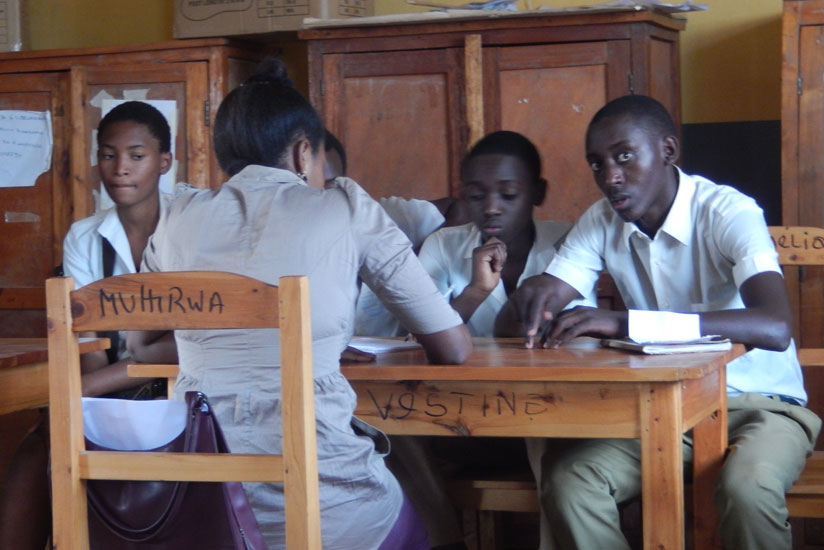One way through which teachers can improve on the quality of teaching is by carrying out peer observation. This is a system where teachers observe one another in class and give feedback at the end of the lesson.


One way through which teachers can improve on the quality of teaching is by carrying out peer observation. This is a system where teachers observe one another in class and give feedback at the end of the lesson. Teachers feel more comfortable with this approach than the evaluative observation which is usually carried out by school administrators, inspectors of schools, education officers and other government officials.
I attended a teachers’ professional development workshop recently and the theme of the workshop was "Teachers Helping Teachers.” The workshop enabled us to realise the benefits of the system where teachers voluntarily observe one another and provide constructive feedback.
Unlike the evaluative observation which creates anxiety in teachers’ minds, peer observation is friendly in a sense that it provides the observer and the one being observed with the opportunity to learn from each other thereby improving on the quality of teaching. I am not saying that evaluative observation is not good. My argument is that it should not be the only method of observing teachers because it makes them develop tension and sometimes they end up stage managing the situation to impress their supervisors.
Peer observation helps teachers to establish whether they use appropriate teaching methods that facilitate learning. When the observer sits in the lesson of another teacher, he analyses the way the colleague conducts the lesson. He is able to establish whether the teacher talks more than the learners and vice versa. There are teachers who never realise that they talk too much in class. Some of them get so obsessed with the content that they end up talking most of the time. This does not help the learners to grasp the concepts. At the end of the lesson, the teacher feels that he has taught but when learners have not learnt.
Peer observation can help us to establish whether we give our students ample time to ask questions and to give their opinions about what they study. With peer observation, teachers can easily find out from their colleagues whether they allocate students adequate talk time and involve them actively in the learning situation.
The other good thing about peer observation is that it creates a good relationship between the teachers involved and they are able to share a lot of information regarding teaching. What happens is that the two individuals first reach an understanding regarding the idea of observing each other. Their main objective is to help each other to teach well and since it is two way, each one of them develops interest in getting feedback from the colleague. If the observer points out certain weaknesses in the person he has observed, the latter takes the feedback from the former in good faith because he knows that it is well intentioned and confidential. For instance, if one of the comments that the observer makes is that the teacher does not ask questions that help learners to develop critical thinking skills, the two individuals may even brainstorm on how to formulate appropriate questions that address the learners’ needs.
Evaluative observation falls short of mutual understanding between the parties involved because naturally, many teachers feel a bit uncomfortable when they realise that they are to be observed by their supervisors or other government authorities. Such observers are considered as people who are always on a fault finding mission and in some cases, they do not give feedback to the teachers that they observe. In cases where they give feedback, they point out the weaknesses without providing alternative approaches. At the end of the evaluation process, some teachers develop anxiety thinking that they will either be demoted or transferred because of their weaknesses. This explains the reason why many teachers dread evaluative observation yet it is mandatory.
Peer observation helps the different categories of teachers to share their experiences and it is an effective tool for senior teachers to mentor their junior counterparts.
Peer observation procedure
Each teacher should select the individual that he would like to observe. The two individuals should hold a pre-observation meeting to determine the observation focus. They may consider aspects like procedure of conducting the lesson, motivation of learners, questioning techniques, connection between content and reality, how the teacher caters for both fast and slow learners, how he corrects learners’ errors, and teacher’s talk time versus students’ talk time. All these aspects are crucial in a teaching and learning environment.
During the observation process, the observer should sit at the back of the classroom and he should not interfere with the lesson. He should focus on the teacher, the learners, the learning aids and the entire learning environment in order to come up with constructive feedback.
The two individuals should hold a cordial post-observation meeting where the person observed is given feedback. The observer should point out the strong and weak aspects observed and the two fellows should share information about the alternative ways of improvement in a harmonious way.
Let teachers help teachers to teach better.
The writer is an English Language Instructor.


